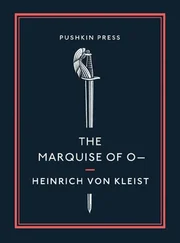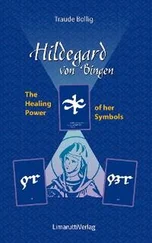None of this was the case — at least it didn’t seem so at first. I found myself back in my Czernowitz, the Romanian Cernăuţi from between the two murderous wars, as if I had never left, a Rip Van Winkle rubbing the sleep from my eyes without first realizing that it had been a sleep of a half-century. Everything stood in place around me exactly as it had been fifty-three years earlier. Nothing was missing — at least at first glance. A second glance revealed tiny changes. Everywhere trees had been planted on both sides of the streets, and their resplendent young greenery brought the city closer together and made the avenues, streets and alleys seem narrower and also more cheerful, almost spalike. It was altogether a Czernowitz to which I had to apologize for my skeptical anticipations. Nothing was dirty or messy. The houses were freshly painted in an imperial Austrian egg-yolk yellow that alternated with an imperial Russian pea green. The pavements were swept clean — the very same cobblestone pavements that once had been polished smooth by the hackneys’ rubber wheels and the same stone slabs of the sidewalk over which I had toddled in my child’s shoes and slid in my first dancing-lesson pumps, with their slippery soles, after some pretty girls along the promenade of Squires Street. The streets, to my boundless relief, were free of the tinny metastases of parked cars. Small amounts of traffic trickled by without bottlenecks, without stench and almost noiselessly. The silence made me aware of the lack of some dearly familiar sounds from the past: what was missing were the rough shouts of “Hoh!” with which the Jewish hackney drivers had shooed inattentive pedestrians out of the way of their horses, and the whirring twitter of swarms of sparrows that everywhere had greedily awaited the plentiful fall of damply steaming horse apples. The hackneys had disappeared, as had the streetcars (whose brakes had had a way of their own and often had caused confused tie-ups in the traffic). Now nimble trolley buses snaked along the old routes, the rails long since paved over, where in the past the faded red-white-and-red cars with narrow windows swayed on little metal wheels like toy boxes, to emerge in front of the town hall on the Ringplatz after having courageously mounted the steep gradient from the Prut River valley, then continuing across town, ringing their bells and shrieking at every curve, all the way out to the People’s Park. Missing too was the bickering of jackdaws in the acacias across from the provincial administration building and around the onion towers of the Orthodox church, missing the rattle of rack carts on which the peasants from surrounding villages drove to market, missing their smell of cheap rotgut and the ‘tinkling clopping’ of their poorly shod scruffy Polack horses. The acacias were now trimmed in the Italian manner and the peasant carts were replaced by the kolkhozes’ trucks. This made the city neater-looking but also more sterile.
I couldn’t get over it. There could be no doubt that this was indeed the Cernăuţi of my childhood, tangibly concrete and real — and yet it wasn’t the Czernowitz whose vision I had carried in me for half a century: Czernopol, the city of the steppes, mythic site of mythic happenings. It was the quintessence of a provincially stolid, bright and well-kept township, undeniably revealing its imperial past, phenotypically a former provincial capital from the eastern reaches of the former Dual Monarchy, still faintly glinting with its erstwhile glory. Sensibly planned streets still presented the architectonically well-meaning and unpretentious façades of bourgeois residences from the middle and end of the last century (in which even the rare extravagances in style were tempered by the period’s mediocrity). The neo-Gothic towers of the Catholic churches, the pseudo-Byzantine cupolas of the Orthodox ones and the pseudo-Moorish crenellations of the Armenian rose in urbane moderation above the level rooftops of the other buildings (I was to learn that only the flamboyant neo-Assyrian temple of the Jews had been razed during the German occupation), and in an equally mild manner the neo-Renaissance public buildings and pseudo-classic garrison barracks still helped the eye to enjoy an easy transition from Gründerzeit architecture to a temperate Art Nouveau. All of this embedded in the fresh greenery of newly planted trees.
For me it was a fall into the unreal. I could no longer trust my senses. The city before me had been built stone by stone in duplication of my legendary Czernopol. But its overwhelming here-and-nowness was devoid of any soul; in some strange way, it was removed from its global time. Not that it had been arrested in its evolution, but rather that it had been backdated, as it were, beyond it. This present-day Chernovtsy was a repudiation both of the interwar Cernăuţi and of the imperial Austrian Czernowitz. In its unaltered surface permanence it had reverted to an abstract, provincially idyllic Belle Époque, a founders’-era dream of itself, but without spirit and life. It was the stage setting of a play that had never been produced, a contradiction in itself: a cleanup, spit-and-polish, lacquered and antiseptic city. Nothing could be felt of its once demonic nature. What could endow this cunning model of a provincial town, as the Chernovtsy of 1989 presented itself, with the wide-awake perceptiveness, the bright resourcefulness, the sharp powers of observation, the delight in ridiculing others and the biting wit of — well, precisely of Czernowitz? Nothing could be detected now of the restlessly vivacious, cynically bold and melancholically skeptical spirit that had distinguished the children of this town and made them known and famous throughout the world as Czernowitzers. And yet the city before me was an undeniable reality, and it was more persuasive than the myth, which was merely my own assertion.
It has been claimed that the spirit of Czernowitz was due to the unique propinquity and juxtaposition of the Bukovina’s multiplicity of populations and to their furiously fermenting compression in its capital, their reciprocal insemination and abrasion, the challenging, constant need to react quickly and adapt shrewdly, a need that had been vital especially for the Czernowitz Jews. All of this seemed invalidated in the here and now of Chernovtsy. The motley ethnic variegation had been replaced by a homogeneous breed of people. Of those wretched avatars, issued from folksy patriotism and fatal nationalism, which had produced Walpurgis Night-like excesses here too, hardly more than allegorical traces remained visible. On the façades of the former Deutsches Haus, Dom Polski, Romanian Casa Poporului and Ukrainian Narodni Dim could still be discerned, though faded by the strongly contrasting local weather, the frescoes of imposing female figures with bared bosoms and all kinds of symbolic appurtenances — sword, book, lyre, wheat sheaves, eagles, throttled snakes — meant to epitomize in Art Nouveau style the spirit of every nationality, each but a single component among the many of the spiritus loci of Czernowitz.
But the primary base element of Czernowitz had always been a cynically healthy derision for all types of lofty conviction. Any true Czernowitzer watched an exhibition of overflowing nationalistic sentiment with no greater personal involvement than that which he reserved for the Purim masquerades put on by street urchins.
Still, it was anything but shoulder-shrugging imperturbability that was responsible for letting these strongholds of conceited, chauvinistically overheated pettiness remain standing just as they had been built and decorated a century ago in the heyday of patriotic romanticism. Among all the spooky, soullessly preserved testimonies to a turbulent past, these were the only ones that appeared dilapidated. I had the impression that behind their now shabby façades these buildings were nothing but empty shells, like houses after a ruthlessly extinguished conflagration, when the firemen have done more damage than the flames — as if, at one time, the aggression they harbored had flared too violently and the people who then exterminated the spreading infection had proceeded so drastically that they also annihilated all the productive antagonisms, all the color and vivid tension that had characterized the city’s contiguous admixture of a dozen nationalities.
Читать дальше












